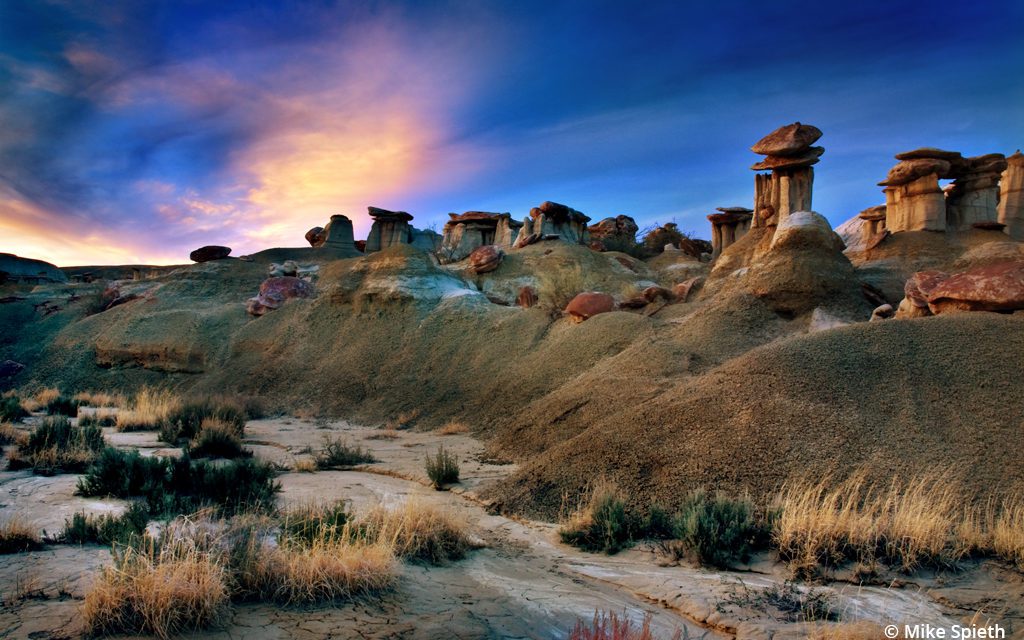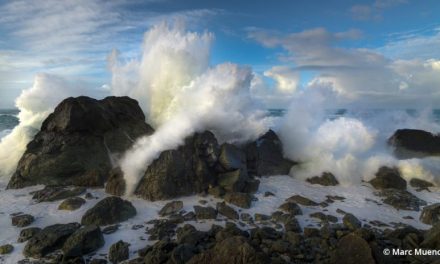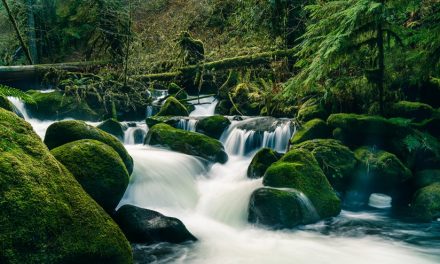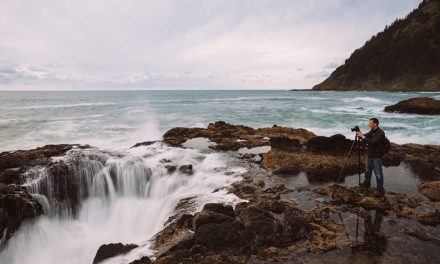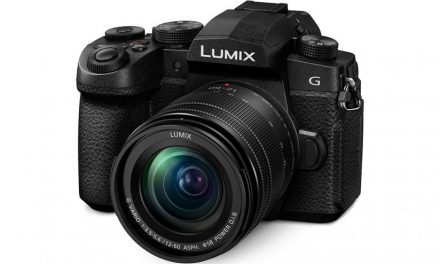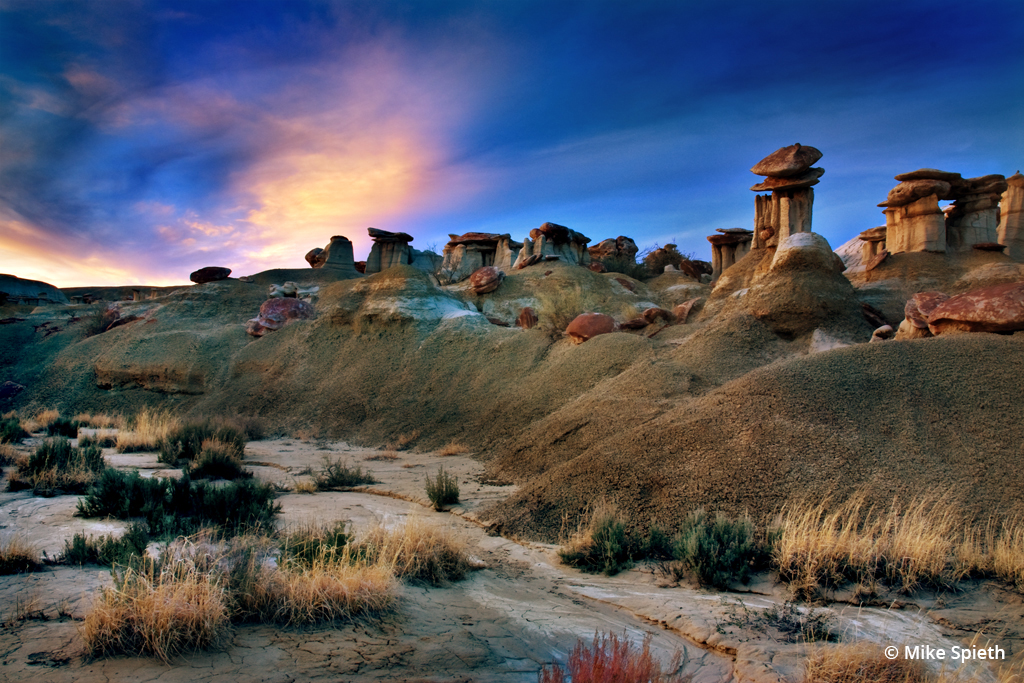
Nikon D200, AF-S DX Zoom-NIKKOR 18-70mm f/3.5-4.5G IF-ED at 18mm (27mm equivalent), Manfrotto 190XB tripod with Manfrotto 3437 ballhead. Exposure: 3 sec., ƒ/22, ISO 100.
The Ah-Shi-Sle-Pah Wilderness Study Area (WSA) is one of several remote badlands in northwestern New Mexico. Throughout the area known as the San Juan Basin, the same geological features that contain beds of coal and gas coveted by industry have also been carved by the ages into fanciful badlands, populated by strange “hoodoos” of rock. The nearby Bisti Wilderness is the most well-known and easily accessible of these badlands and provides a good introduction to the area.
The Ah-Shi-Sle-Pah and other badlands are on the “checkerboard,” where the square miles of land alternate in ownership between state, Bureau of Land Management and the Navajo Nation. Slow down while driving and watch out for livestock. Maps are recommended to navigate the lonely open-range roads of the area. A high clearance vehicle is usually not needed, but all-wheel drive might keep you out of trouble.
As for the badlands themselves, there’s not much variance in elevation between the highest and lowest parts of the landscape, so topo maps are of limited use. Just keep your eyes open. These alien landscapes are as fragile as any that you’ll ever visit, so please tread lightly because your footprints might be visible for years to come.
Weather At Ah-Shi-Sle-Pah Wilderness
In summer, dusty winds and brutal sun prevail, and the high desert heat of June and July could be too much for some unaccustomed hikers. Sunscreen and lots of water are the most important items to carry in your pack. The summer thunderstorms make for some of the best backdrops for photography, but they can also strand you for hours when the dirt roads become impassable. If stormy skies are what you’re looking for, be prepared to possibly stay a while.
The badlands can be hiked year-round, even in winter, since storms rarely leave snow on the ground for long.
Photo Experience
This image was captured in April of 2010, just after sunset. I had been at this location several times before but either at the wrong time of day or under a less-interesting sky. The challenge was getting the shot under quickly fading light while waiting for a few seconds here and there with no wind to sway the grasses.
Best Times To Visit Ah-Shi-Sle-Pah
The evening or morning light emphasizes the rich colors often hidden by the harsh mid-day sun, and the best light for photography, as you might expect, is usually within an hour on either side of sunset or sunrise. Dusk and pre-dawn can exaggerate the richest and most unexpected hues in the badlands, making a tripod the most important piece of equipment you should bring. If you intend to shoot in the morning, it’s best to hike an hour or more before sunrise, so selecting a location beforehand is a good strategy. As for the time of year, I prefer the warmer months because when you intend to capture both the evening light and dawn light during one visit, there are fewer hours to wait through the shorter nights.
Contact: Bureau of Land Management, blm.gov/visit/ah-shi-sle-pah-wilderness.
See more of Mike Spieth’s work at mikespieth.com.
The post Ah-Shi-Sle-Pah Wilderness Study Area appeared first on Outdoor Photographer.

